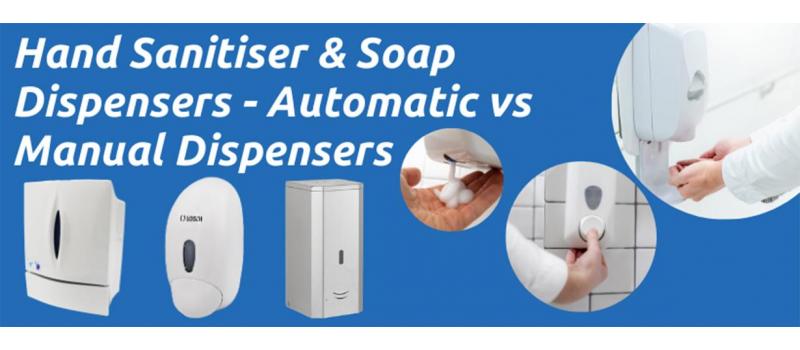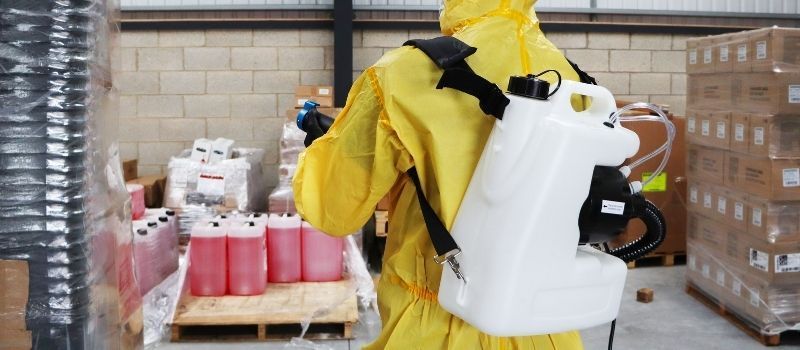Regular and comprehensive cleansing of our hands has never been more important. Installing hand sanitiser and soap dispensers ensures individuals have access to hygienic and economical hand washing facilities, in order to prevent the spread of infection and viral diseases.
What is the Best Way to Wash my Hands?
Washing your hands with soap and water for at least 20 seconds is still considered by health experts to be the best protective method in preventing the spread of COVID-19. However, both Public Health England and the NHS recommend hand sanitiser with alcohol content higher than 60% to be an effective alternative in situations where soap and water are not always readily available.
Many soap dispensers are compatible with our hand sanitiser, rinse and rub products (all contain 70% alcohol or above), which means they can be adapted for quick and convenient use at fixed points and in designated spaces such as building exits and entrances, corridors, aisles and internal doorways.
For dispensers being used to dispense foam or liquid soap, access to water or a sink is required for rinsing purposes. This makes them practical for traditional locations such as high-traffic kitchens, bathrooms or washrooms.
What is the Difference Between an Automatic Soap Dispenser and a Manual Soap Dispenser?
Dispensers are generally divided into two categories – automatic soap dispensers and manual soap dispensers. Automatic soap dispensers operate through sensors which supply a controlled amount of hand soap and therefore require no physical contact from the user. Whereas, manual soap dispensers require the user to apply pressure – for example, pressing a button in order to release the liquid or gel.
Installing soap dispensers offers excellent reassurance to workforce, customers and other personnel in the likes of commercial premises and manufacturing units as it gives off an excellent first impression – they know straightaway that you care about the hygiene and well being of not only your employees, but everyone who steps foot in the premises.
Whether you need a soap dispenser for a small coffee shop washroom or a large industrial facility where hundreds of employees are often present, it is essential that you are aware of the benefits and downsides to ensure you deliver a practical hand washing solution.
Why Choose an Automatic Soap Dispenser?
Automatic soap dispensers are commonly installed in high-end environments and executive restrooms such as hotels, airport bars and restaurants, with their contemporary look and economic dispensing providing a standardised hand soap dosage to the user. All that is required of the user is to place their hands below the dispensing system and the dispenser will automatically release a dosed amount of hand soap or sanitiser.
The big selling point of any automatic soap dispenser however is its completely touchless operation which helps reduce the spread of germs and bacteria between uses by eliminating a common contact point.
Why Choose a Manual Soap Dispenser?
Manual soap dispensers are typically much cheaper than their automatic counterparts, with their simple design a prominent sight in many high-traffic facilities and washrooms. Despite not presenting the hands-free operation associated with automatic dispensers, they yield excellent functionality and reliability for long-lasting use as they are not dependent on battery power and built-in smart infrared motions sensors to administer the cleaning solution.
The manual triggering of a button or lever is much more familiar and user-friendly for all visitors in comparison to the standardised doses that have the potential to cause confusion. This is because users will not always know where the soap dispenses from, causing this misunderstanding to produce excessive waste.
As the majority of people will be using the soap dispenser while their hands are still dirty or immediately after using the toilet, manual soap dispensers do require greater regular cleaning of common touch points than automatic dispensers to prevent cross-contamination.
What Other Factors Do I Need To Consider?
- Security – Heavy duty materials such as stainless steel and strong ABS plastic are often used in the construction of soap dispensers so that they are robust and able to stand up to repeated use. If necessary, consider choosing a dispenser with a lockable cover to deter against vandalism and tampering of the contents.
- Cost – Automatic soap dispensers are reliant on either mains electricity or battery power. Mains powered units will need to be placed near a plug socket which isn’t always practical and may even require additional wiring and electrical work to be carried out. Battery powered dispensers will have a limited battery life and therefore the cost of replenishing batteries will need to be taken into account. Some dispensers have the benefit of a non-drip valve, meaning there will be no mess to clean up after extended use, saving both time and unnecessary wastage.
- Capacity – Dispensers come in many sizes. For high-traffic environments that are prone to repeated and regular use such as stadiums, schools and supermarkets, a larger capacity is recommended as it will remove the need for frequent refilling. Smaller units are suitable for use in low-traffic settings such as independent retailers, hairdressers and cafes.
Both models offer distinct designs and noticeable advantages when it comes to selecting the appropriate unit for your application or environment, but ultimately you need to go with the one that is going to initiate positive engagement and sustainable hand hygiene.
Please feel free to view our full range of Hand Hygiene Dispensers or alternatively, contact a member of the Kingfisher Direct team today on 01777 858009 if you require any further information or assistance.


